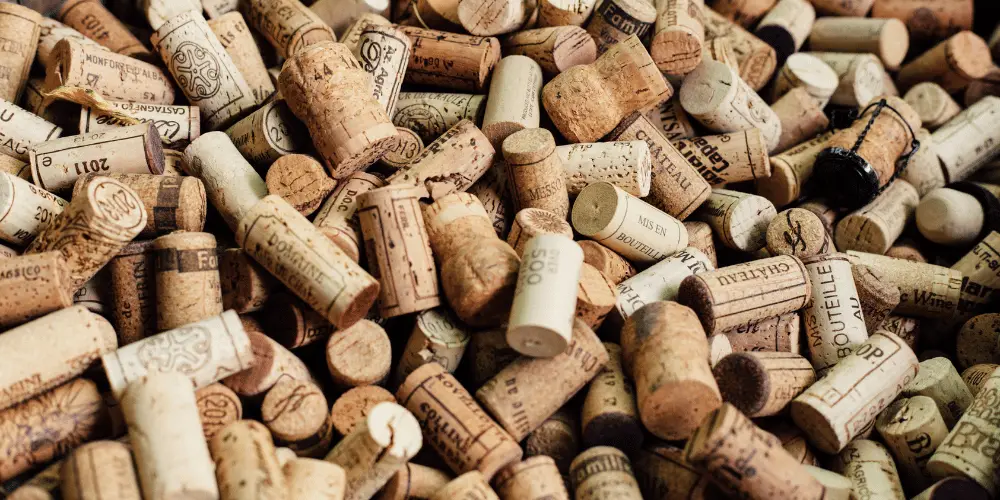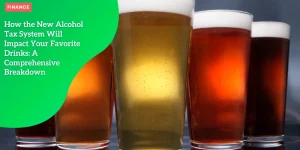Sustainable Wine Revolution: How Alternative Packaging is Transforming the Industry
Anúncios
The Evolution of Wine Packaging
Breaking Away from Tradition
For centuries, glass bottles have been synonymous with wine.
However, the industry is at a turning point, progressively embracing innovative packaging solutions such as kegs, boxes, and cans.
Anúncios
This shift is driven by the dual needs for convenience and sustainability, which glass bottles traditionally cannot fully address.
Convenience meets Sustainability
The rise in alternative packaging solutions is driven by the demand for more practical and eco-friendly options.
Anúncios
Consumers are now witnessing a revolution where the emphasis is placed on reducing carbon footprints and waste.
For instance, kegs and cans require fewer resources for transportation and are easier to recycle compared to glass bottles.
Changing Perceptions on Quality
Initially, alternative wine packaging faced skepticism regarding quality.
However, this perception is changing as premium wines are now available in these formats.
High-quality wines in kegs, boxes, and cans from reputable brands are helping to elevate the status of these alternatives.
As consumers adapt, they recognize that great wine can indeed come in formats other than glass.
The evolution of wine packaging is clearly reflecting broader shifts within the industry, rooted in sustainability and innovation.
With this change, educational efforts are crucial to further acceptance and appreciation of these modern packaging solutions.

Alternative Packaging Solutions
Overview of Kegs, Boxes, and Cans as Modern Alternatives
Wine packaging innovation is not merely a fleeting trend but a response to the evolving needs of both the industry and consumers.
The traditional glass bottle, while still treasured, is increasingly accompanied by modern alternatives like kegs, boxes, and cans—each bringing unique benefits to the table.
- Kegs: Ideal for restaurants and bars, kegs offer a sustainable and efficient way to serve wine. They significantly reduce waste and ensure that wine remains fresh for months after opening.
- Boxes: Once stigmatized as low-quality, boxed wines have come a long way. They now feature eco-friendly packages from reputable brands, making them perfect for everyday home consumption and casual gatherings.
- Cans: Gaining popularity especially among outdoor enthusiasts, canned wines are praised for their portability and full recyclability, making them an excellent choice for picnics and beach trips.
Technological Advances in Maintaining Wine Freshness
Maintaining the quality of wine is paramount in any format.
Advances in technology have played a pivotal role in making alternative packaging not just feasible, but actually beneficial for preserving wine’s integrity.
- Better Sealing Technologies: Improved sealing mechanisms in boxes, cans, and kegs have extended shelf life by preventing oxidation and maintaining the wine’s freshness from first pour to last.
- Advanced Materials: Materials used in these modern packaging solutions are designed to be inert and impermeable, ensuring the wine does not interact negatively with the container.
Benefits of Each Packaging Format for Different Occasions
Each alternative packaging format brings distinct advantages that cater to various occasions and consumer preferences.
- Kegs: Best suited for high-volume and frequent wine dispensing situations like restaurants or events, kegs offer freshness and consistency unmatched by other packaging types. They reduce both spoilage and cost.
- Boxes: The convenience of boxed wines fits perfectly with casual gatherings and home use. They are easy to transport and store, and their packaging significantly reduces carbon emissions.
- Cans: Perfectly portable, cans are the go-to choice for outdoor activities. Their durability and ease of recycling make them a smart choice for eco-conscious consumers.
The innovation in wine packaging is paving the way for more sustainable and convenient choices, without compromising the quality that consumers expect.
This evolution is essential as we move forward in redefining how wine is enjoyed across various occasions and settings.
Environmental Impact and Cost Benefits
Reduced Carbon Footprint and Transportation Efficiency
Alternative wine packaging, such as kegs, boxes, and cans, significantly reduces the wine industry’s carbon footprint.
These modern solutions make transportation far more efficient compared to traditional glass bottles.
For instance, it takes seven trucks to transport the same amount of wine in bottles as one truck can carry in boxes.
This substantial reduction in the number of trucks used results in lower fuel consumption and fewer emissions, easing the strain on logistics and the environment.
Lower Recycling and Waste Management Requirements
Glass bottles have a complex recycling process that requires considerable energy to melt and reform them.
In contrast, kegs and cans are 100% recyclable and easier to process.
Kegs, for example, can be reused for extended periods, significantly reducing waste.
According to Emily Jago from JKS, kegs lower falling waste because they have a much longer shelf life.
This advantage results in fewer bottles ending up in recycling bins, lessening the overall environmental footprint.
Cost Savings for Producers, Distributors, and Consumers
The move to alternative packaging is not only eco-friendly but also economically beneficial.
Shipping wine in kegs, boxes, or cans is significantly more cost-effective than traditional glass bottles.
For example, Chris Wawak highlights that it takes far fewer trucks to transport the same volume of boxed wine compared to bottled wine, thereby reducing shipping costs.
These savings are often passed down the supply chain, benefiting producers, distributors, and eventually consumers, who enjoy better value for their purchases.
The wine industry’s shift towards alternative packaging is creating a more sustainable and cost-efficient future.
This evolution highlights the importance of balancing environmental responsibility with economic advantages, paving the way for further innovations in wine packaging.
The Restaurant Revolution
Growing Adoption of Wine-on-Tap Systems
The restaurant industry’s embrace of wine-on-tap systems is reshaping how wine is served and consumed.
Once a rarity, serving wine straight from kegs has now become a mainstream trend among restaurants and bars.
This is not just limited to casual pubs; fine dining establishments are also onboard, offering high-quality wines in this innovative format.
Role of Sommeliers in Promoting Alternative Packaging
Sommeliers play a crucial role in promoting wine in alternative packaging.
Their authority and deep knowledge can significantly influence customer perceptions and preferences.
By curating wine lists that include kegged wines and offering tastings, sommeliers can demonstrate that these alternatives do not compromise on quality.
Narrative-driven service where sommeliers explain the environmental and economic benefits of kegs further aids in consumer education and acceptance.
Improved Consistency and Freshness in Service
One of the primary advantages of wine-on-tap systems is the improved consistency and freshness they offer.
Unlike bottled wine, where an open bottle may oxidize, wine from kegs remains fresh from the first glass to the last.
This is a game-changer for restaurants, ensuring each pour consistently meets the standards set by the sommelier.
Emily Jago of the JKS group points out that the freshness and value provided by wine on tap are unmatched by bottled wine.
As the adoption of wine-on-tap systems continues to rise, restaurants look to balance tradition with these new, sustainable practices, enhancing both the dining experience and their environmental impact.
Consumer Education and Acceptance
Addressing Quality Perception Challenges
One of the main hurdles for alternative wine packaging is overcoming the skepticism surrounding quality and taste.
Traditional glass bottles have long been seen as the gold standard for premium wines.
However, this perception is changing as high-quality wines are now available in kegs, boxes, and cans.
For instance, Emily Jago notes that the last glass of wine from a keg is as fresh as the first, showcasing the consistency and quality these formats can maintain.
Educating Consumers about Environmental Benefits
Education plays a critical role in shifting consumer perceptions.
When wine lovers understand the environmental benefits of alternative packaging, they are more likely to embrace it.
For example, wines packaged in boxes or cans significantly reduce carbon emissions by minimizing transportation needs.
Chris Wawak highlights that it takes seven trucks to move the same amount of wine in bottles as one truck of boxes.
These insights help consumers appreciate the ecological advantages, encouraging them to support sustainable packaging solutions.
Demonstrating the Value Proposition
Restaurants and sommeliers are key in promoting alternative wine packaging.
By offering tastings and featuring these options on menus, they can help demystify and normalize non-traditional formats.
For example, establishments like Uncharted and St.
John have successfully integrated high-quality wines on tap, proving that these alternatives can hold their own against their bottled counterparts.
Sommeliers can further enhance the experience by sharing stories about the wine’s origin and the sustainable practices behind its packaging, turning each glass into an educational journey about environmental responsibility.
This renewed understanding is fostering wider acceptance, setting the stage for innovative wines to enter the market.
As consumers become more open to these changes, the industry will continue to see a blend of tradition and modernity in wine packaging, striking a balance that benefits both the environment and wine lovers alike.
Future Outlook
Balancing Tradition with Innovation in Wine Packaging
The wine industry is navigating a delicate balance between honoring traditional glass bottles and embracing innovative packaging.
Glass bottles have a legacy of representing quality and aging potential, especially for luxurious and aged wines.
However, for younger and fresher wines, alternatives like kegs, boxes, and cans offer practical advantages.
Expanding Market for Sustainable Solutions
The demand for sustainable wine packaging is growing as both consumers and producers become more environmentally conscious.
The variety of alternative formats such as canned, boxed, and kegged wines is expanding, driven by their lower carbon footprints and ease of recycling.
These formats are especially appealing to eco-conscious consumers who seek convenience without compromising quality.
Potential Developments in Eco-Friendly Materials
Innovation in sustainable materials is spearheading the evolution of wine packaging.
Pioneers like St. John are offering high-quality organic wines in recyclable packaging.
The industry is also exploring biodegradable bags and advanced recycling technologies to further reduce waste and support a circular economy.
Advances in sealing technologies and materials will likely enhance wine freshness, making these new formats even more appealing.
As the market and technology evolve, the wine packaging industry is poised to blend tradition with innovative, sustainable solutions, enhancing both consumer satisfaction and environmental impact.






